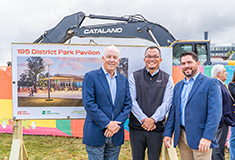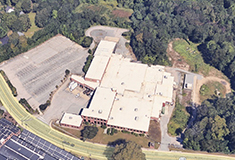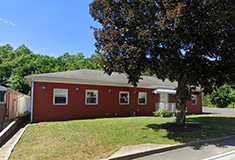Pawtucket’s zoning ordinance gives flexibility for mill redevelopment - by Donald Grebien

Mayor of Pawtucket
Providence has its Providence Performing Arts Center, Trinity Repertory Company and Waterfire, and Newport has its beaches and mansions. But, the City of Pawtucket, birth place of America’s Industrial Revolution, has its abundant mills. The city’s rich industrial history of technological innovation and the living legacy of its mills where it all took place continues today with new uses.
Pawtucket, with its adaptive reuse mills, has gained a national reputation, this reported in the New York Times, Wall Street Journal and Boston Globe as being a great place to live and work as an artist or designer. Changes in the city’s zoning ordinance to create Mill Building Reuse District (MBRD) overlays now allow mill owners to create these uses and more vibrant communities within their walls while retaining light industrial use in the property. The code changes open the door for a wider assortment of uses within these historic buildings, allowing owners to attract companies they otherwise wouldn’t have been able to.
To most this would seem like a no-brainer or a process already in place, but to developers, it ensures that red tape does not get in the way of a great project. MBRD, taking effect in August 2008, allows redevelopment of industrial sites for mixed use development through careful site planning. It allows Pawtucket’s Department of Planning and Redevelopment to promote appropriate use of the mills built before 1950 and expands economic development of the mills throughout the city. The ordinance promotes the mixed-use of the mill complexes remaining in the city to ensure their viability.
The intent of Pawtucket’s MBRD overlay is to repurpose industrial buildings and land when former industrial uses are no longer viable. The city’s comprehensive plan recognizes that the upper floors on a three-story building for example are inappropriate for today’s industrial uses, but are well suited for conversion to small business or artist studio/gallery space and loft style residential units. Adoption of the MBRD overlay also permits an overall reduction in the amount of required off-street parking spaces.
Changing the zoning designation to MBRD provides greater flexibility by allowing a wider variety of tenants by right along with offering a quick and expedited review process to fill vacant spaces with new businesses.
Since its inception seven properties have been rezoned to MBRD, generating 290 loft apartments and 135 business tenants. In these mills, property owners taking advantage of this code designation are encouraging their properties to become true communities of artists and creative small businesses.
The city’s mills are much more than bricks and mortar, high ceilings and wooden floors. These historic mills are our cultural and economic assets. Come see the mill properties that have been repurposed and reenergized through MBRD as homes for artists, artisans, designers, and technology-based companies.
For specifics about mills available in Pawtucket and for a copy of the MBRD ordinance, email, Jeanne Boyle, commerce director at jboyle@pawtucketri.com.
Donald Grebien is mayor of the City of Pawtucket, R.I.
Shawmut Design and Construction breaks ground on the 195 District Park Pavilion in Providence, RI








